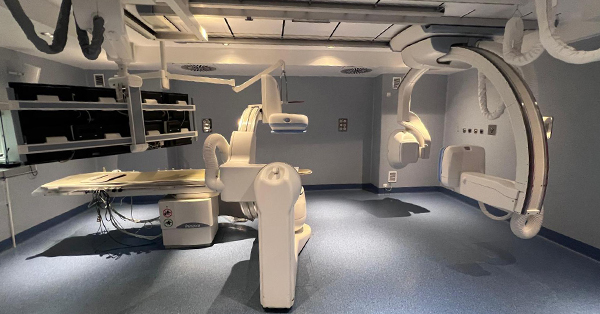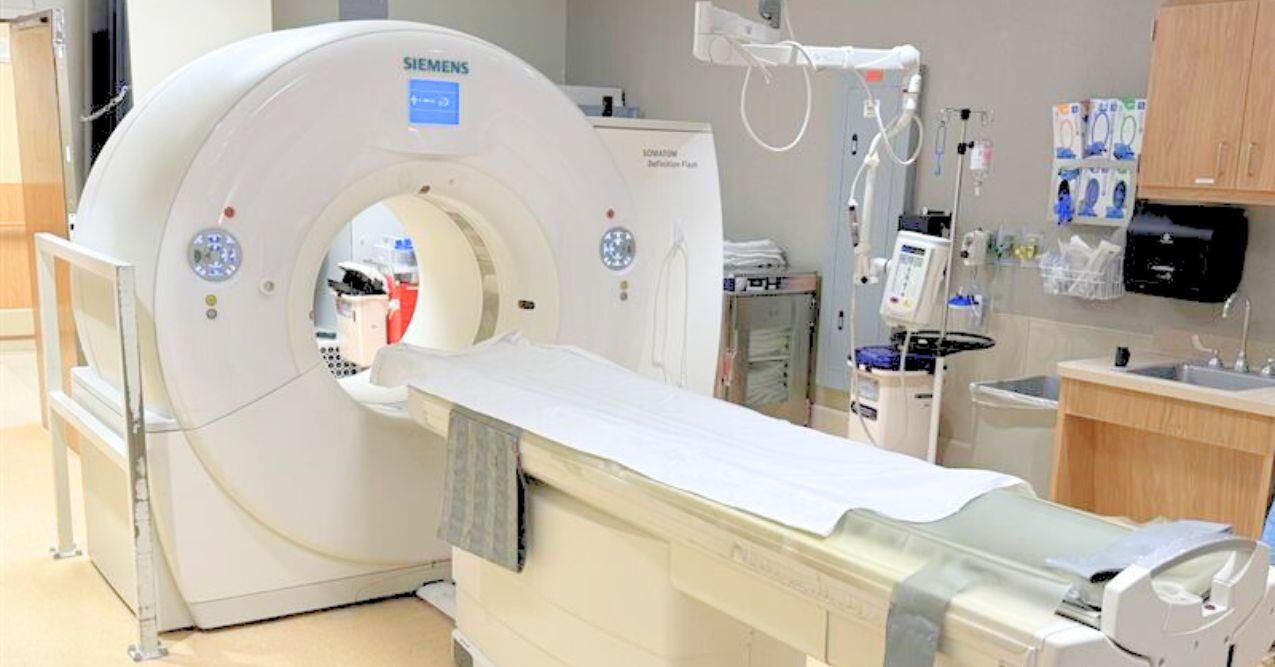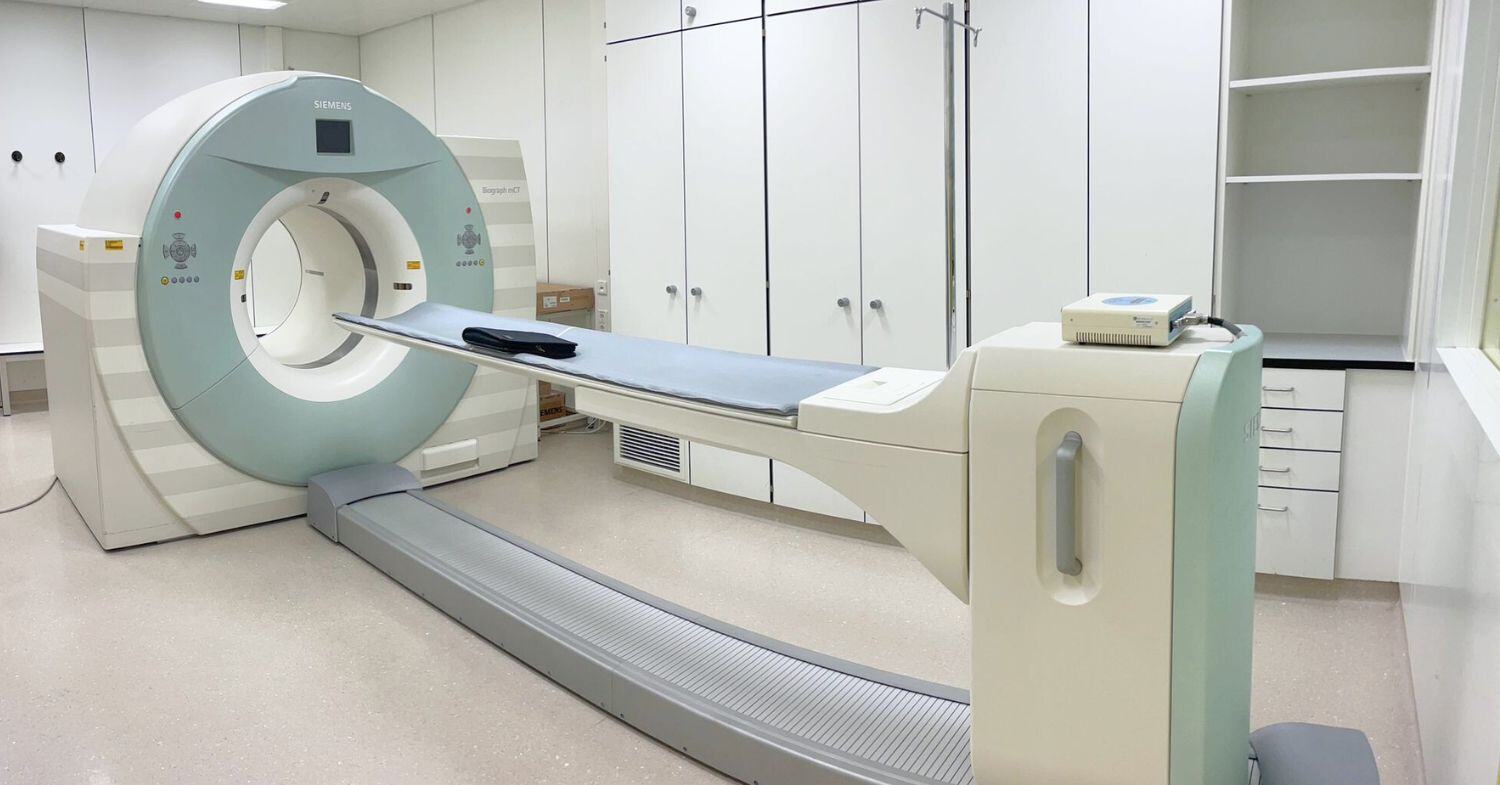
Embarking on your journey into the Cath Lab market can be exciting and overwhelming!
Maybe you've already come across the different cath lab configurations available, such as bi-plane or single-plane as well as the option to have it ceiling-mounted or floor-mounted. In this blog, we'll be focused on the differences between single-plane and bi-plane cath lab systems so you can make an educated decision on which is the best fit for your facility.
Besides their general setup, bi-planes and single-plane cath labs vary greatly in their size, specializations, and capabilities so having a thorough understanding of each system is essential.
To guide you in this pivotal choice, we’ve crafted a concise, yet informative guide packed with essential insights about the two kinds of systems including:
- Cath Lab Specializations: Bi-Plane vs. Single Plane
- Image Acquisition Speed: Bi-Plane vs. Single Plane Cath Labs
- Space Requirements: Bi-Plane vs. Single Plane Cath Labs
- Cath Lab Site Preparation: Bi-Plane vs. Single-Plane
- Cost Difference: Bi-Plane vs. Single-Plane Cath Labs
Get Your Custom Equipment Pricing Today!
Unlock Exclusive Offers with Our Pricing Request Form
Looking to upgrade or purchase a Cath Lab? Fill out our quick form to receive a personalized pricing quote tailored to your specific needs. Our team is dedicated to providing you with competitive pricing options and detailed information to help you make the best decision.
Cath Lab Specializations: Bi-Plane vs. Single Plane
Note: The type of work you plan to use your lab for will have at least as much (if not more) weight in your decision between a bi-plane and a single-plane Cath lab as any other difference we'll discuss here.
Bi-Plane
A bi-plane system excels in cases where you’re looking for comprehensive, multi-angle imaging for diagnosis and treatment. If your facility is planning for a dedicated neuro or EP lab, for example, you'd be best served by a bi-plane system.
With dual C-arms, you can capture high-quality images from two angles simultaneously. If the room is occasionally used for other types of procedures, the system’s settings can be adjusted to use just one C-arm, providing flexibility and cost-efficiency.
Single-Plane
A single plane is particularly suitable for facilities with a blended focus, offering a flexible platform for procedures like balloon angioplasty, stent placement, and angiographic imaging.
If you still plan to do neuro or EP studies, but a bi-plane lab just isn't in your budget, allocating some spending to properly equip a single-plane lab can make it capable of handling that type of work.
Image Acquisition Speed: Bi-Plane Vs. Single Plane Cath Labs
Bi-Plane
Because bi-plane systems capture image data from detectors on two axes, they can acquire 3D images faster. The simultaneous imaging minimizes the need for repositioning, reducing the volume of contrast media required during procedures, which is beneficial for patient safety and comfort.
A bi-plane Cath lab also comes equipped with 3D standard software technology. This is especially useful in neurovascular and electrophysiology (EP) procedures.
Single-Plane
Single-plane labs are also capable of 3D imaging. However, the software’s reconstruction process combined with the C-arm repositioning makes its process time-consuming.
While 3D imaging is a standard feature in bi-plane labs, it is an add-on feature in single-plane labs, requiring extra OEM software and hardware to achieve. Keep in mind that this can hike up the cost of the system!
Space Requirements: Bi-Plane Vs. Single Plane Cath Labs
Bi-Plane
With a second C-arm and the cabinets of electronics required to run it, anyone would guess that a bi-plane system has a larger footprint than a single-plane system, but many don't realize how much bigger.
Take for instance the GE Innova series: GE recommends a space almost 200 square feet larger for a bi-plane! There are, however, exceptions in this area. The Philips FD20/20 fits in a space only slightly larger than its single-plane counterpart, the FD20.
If the work you're planning to do calls for bi-plane technology, don’t get scared by these dimensions. Experienced installers can do a lot to get either version of a system into more conservative spaces.
Be aware that you might need more room than you think!
Single Plane
Compared to a bi-plane, a single-plane Cath lab requires much almost 200 sq feet less. According to the ACC, they suggest 500-600 square feet for the procedure area and 150-200 square ft. for the control room.
This streamlined space requirement can be a consideration for facilities with limited square footage or those aiming to optimize their Cath lab layout for efficiency and functionality.
Cath Lab Site Preparation: Bi-Plane vs. Single Plane
Bi-Plane
I’m sure you can probably guess what this paragraph is going to say: double the c-arms = double the site prep.
That might be an oversimplification, but there will be significantly more involved in getting your space ready for a bi-plane Cath lab. Installing a bi-plane system requires ceiling support for the second C-arm and additional rigging, resulting in a larger overall footprint. Bo
For a bi-plane, you must also plan for both a floor and a ceiling-mounted gantry. In the case of the Innova biplane, there are around 2,000 lbs. of additional weight hanging from the ceiling vs. its single plane counterpart, including the ceiling “Lateral Positioner” (gantry), additional rails, and additional monitors.
Single-Plane
Any Cath lab has both ceiling (monitors, maybe the gantry) and floor-mounted (table, maybe gantry) components.
When it comes to a single-plane Cath lab, the setup is more straightforward and less demanding in terms of infrastructure. With only one C-arm the space requirement needed for the system, cables, and monitors is greatly reduced.
Because it requires less physical space the single pane is a more flexible choice for smaller facilities.
Cath Lab Cost Differences: Bi-Plane vs. Single Plane
Bi-Plane
Bi-plane Cath labs simply come with more "stuff", therefore they cost more than single-plane systems. However, while there are double the critical components (tubes, collimators, detectors, computers), service pricing isn't twice as much.
Currently, service coverage for a bi-plane Cath lab averages 25-30% higher than service for a single-plane system.
Single-Plane
The cost savings of a single plane Cath lab can be significant, allowing you to deliver quality care across a range of specialties while managing expenses.
Another factor that plays into the cost difference is the application of the system. If you’re using the Cath lab for multiple specialties, you will most likely need additional accessories that can greatly increase your initial cost. For example, if you need the system for Angiography, you will need an injector for contrast.
The Takeaway
Your facility’s Cath lab decision is crucial, and we’re here to support you every step of the way. As you prepare to purchase your next Cath lab, remember to take into consideration:
- What kind of image acquisition speed does your facility need?
- What specialization will you be using your Cath lab for?
- What space requirements do you have for a Cath lab?
- How do you need to prep your site for a Cath lab?
- Do you have any budget constraints?
We hope this guide has been informative! For more Cath Lab resources and expert guidance, visit our Block Imaging Learning Center.
Get Your Custom Equipment Pricing Today!
Unlock Exclusive Offers with Our Pricing Request Form
Looking to upgrade or purchase a Cath Lab? Fill out our quick form to receive a personalized pricing quote tailored to your specific needs. Our team is dedicated to providing you with competitive pricing options and detailed information to help you make the best decision.

Kenn Dextrom
Kenn Dextrom is the Director of Product Manager at Block Imaging. He aims to provide clear direction and careful planning for Interventional Cath Lab buyers and working with the Block Imaging product team to provide excellent solutions for our customers. Out of the office, he spends most of his time keeping up with his wife and their three energetic sons.






